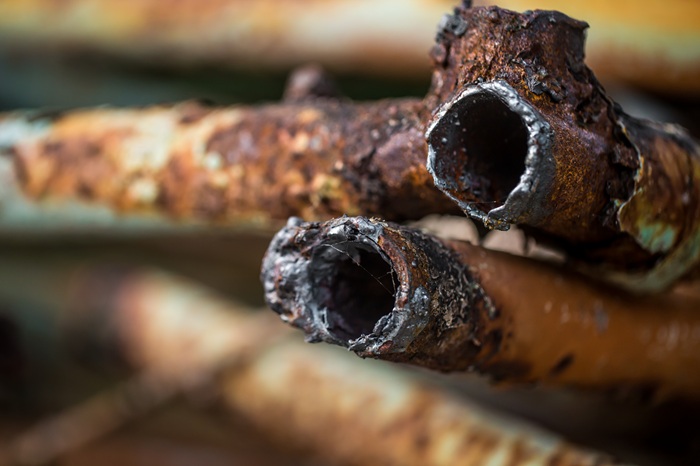Home / The Hidden Damage After a Burst Pipe

A broken pipe is every homeowner’s worst fear. It can happen without notice. You may see a drip from the corner of the ceiling or a wet area on the wall extending outwards. Repairing the visible leak is only step one in the process. Much of the damage can be hidden below the surface, slowly damaging aspects of your home you may not consider.
In this article, we will explore the effects of a burst pipe that cannot be seen and why it is important to act quickly. We will also discuss the complications that leaky faucets or blocked drains in Aylesbury can sometimes mean, a bigger project to fix your plumbing.
When a pipe breaks, water gets into places it should never go. Water can soak into floors, walls, and insulation. Even after the water is visible, the moisture remains in a hidden space. Over time, the result is mold, wood rot, and weakening of structural integrity.
A lot of those homeowners believe that simply running a fan to dry out the affected area is adequate. Unfortunately, that is insufficient because water can remain deep inside your plaster, timber, and concrete. The water will start to compromise the base of your home if it remains unattended at some point. Your floors may warp, your ceilings may sag, and your walls may crack. Most of these issues appear a few weeks or even months later. By then, the repair costs could be very high.
Mold growth is one of the most common problems to deal with after a pipe has burst. It grows in damp, dark places like behind walls and under flooring. You probably won’t see it very quickly, but you will notice the musty smell within a few days.
Mold is not only unappealing, but it can also have far-reaching effects on your health. Those with allergies, asthma, or compromised immune systems are particularly sensitive to it. Once mold has begun to spread, it cannot be fully removed by basic cleaning. Professional treatment is often necessary to safely remove the spores and prevent future growth.
The quickest method to avoid the growth of mold is to address any water-damaged materials immediately after they are affected. Completely dry any wet areas and utilize a dehumidifier if needed. If you see signs of moisture for a long time after the repair, reach out to a plumbing contractor and ask them to check for hidden leaks.
Read More: Winter Plumbing Checklist
Water doesn’t harm only surfaces. It also damages the materials that bind your home together. Wood beams, plasterboard, and metal fittings can weaken over time. In the worst cases, the building can become unsafe in some areas.
You may notice doors that no longer shut securely or floors that begin to slope. These indicate that the damage caused by moisture is deeper. Structural repairs can be costly, but you risk causing more issues down the road.
Even minor plumbing problems can cause this kind of damage if left unattended. A simple faucet leak may seem insignificant, but leaks of any kind can accumulate. A leaking faucet or undetected leak from inside a wall can keep areas of your home moist for long periods, allowing mold and decay to proliferate undetected.
The risk rises when water comes into contact with electrical wires and outlets. Short circuits, electrical shocks, and fires can occur. When there is a pipe leak, make sure to turn the power off to the area and contact a professional.
Do not ever attempt electrical repairs when there is water damage. A professional electrician and plumber should assess the area before you turn the power back on.
It is rare to experience a burst pipe without prior warning signs. Usually, small plumbing matters will indicate something is wrong. Dripping taps, slow draining, and any changes in water pressure or low water pressure should not be ignored as possible small signs you’re experiencing larger plumbing issues.
For example, blocked drains in Aylesbury is often the cause of a build-up of pressure in pipes. As water cannot flow freely, it essentially places certain pressure on your entire plumbing system. Under certain circumstances, it is possible for pipes to burst, for example, water inside frozen pipes can expand and become a major issue.
Typically, regular maintenance can deter these issues. If you notice a slow flow of water, it is advisable to have your drains checked (in terms of inspection and clearing). Exposed pipework in colder months also needs to be monitored, and possibly insulated to deter freezing.
If you think you have water damage hidden, you should find a professional. A qualified plumber should be able to scan your pipes with moisture meters and thermal imaging. This will help identify any leaks hidden inside walls or flooring before the water causes long-term damage.
If you live in Aylesbury or the surrounding areas, plumbing professionals can handle everything from leaky faucet repair to clearing blocked drains. They can also perform checks on your system for issues with pressure and any possible corrosion that could lead to future pipe breaks.
While a broken pipe may seem like a problem that happens once and is not a big deal, the damage will last for months. The eventual mold, compromised walls, and structural rot will be hidden until it is too late to recover from the damage. React quickly by drying all wet materials and calling in the professionals so that you can avoid costly repairs down the road.
Do not overlook the little things. You may find a dripping faucet or slow-draining sink harmless, but they may be the freshly visible sign of much larger problems. Be vigilant, take action, and prevent the hidden problems that water can cause to your home.